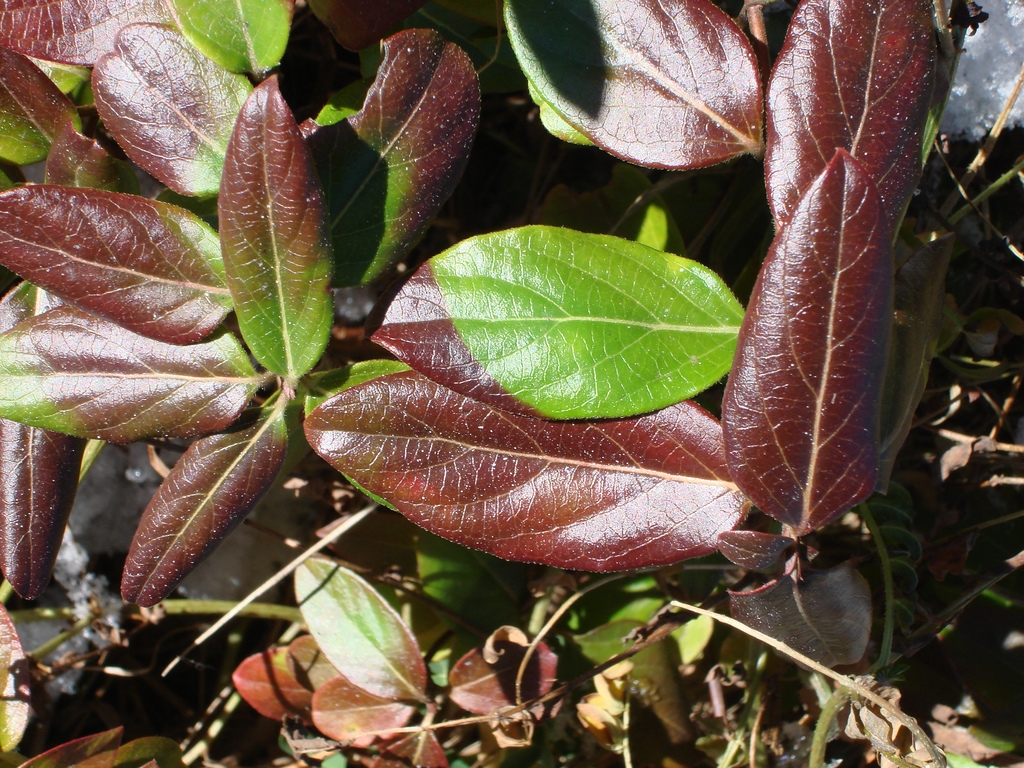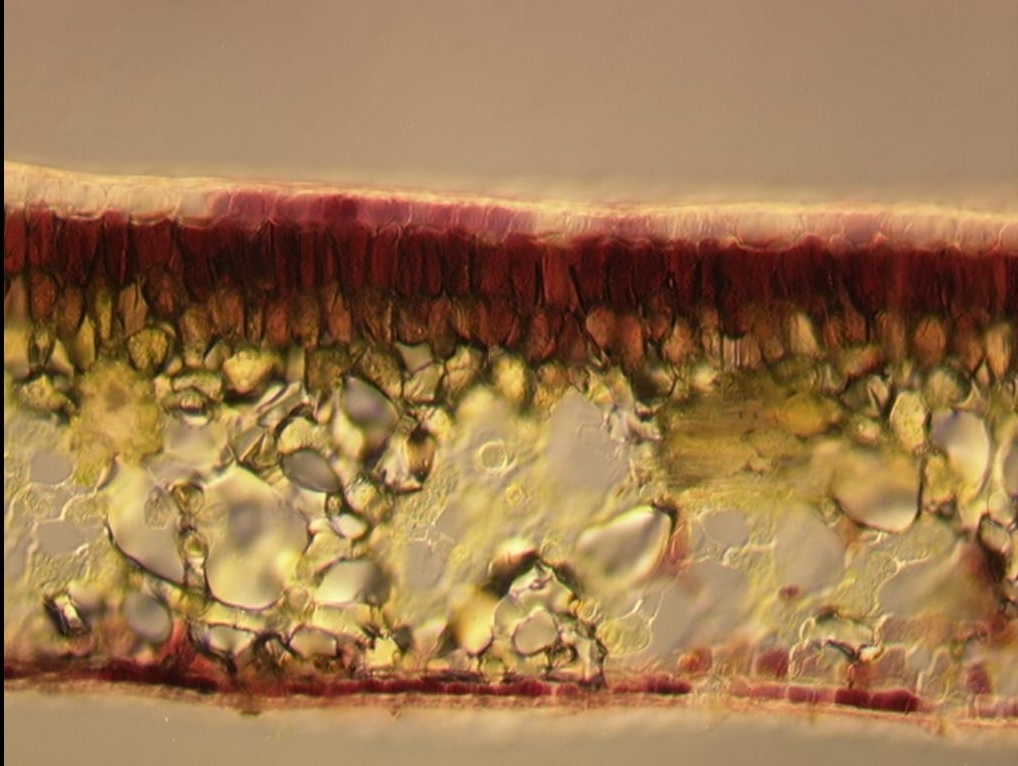

|
|
|
Photoprotective Pigments
We are studying the functional significance of accessory pigments such as the anthocyanin found commonly in newly developing leaves on growing tips in a wide variety of plant species. These red leaves contrast sharply with the mature leaves found at older nodes lower on the branch. Some species have leaves that turn red when exposed to high sunlight levels and a large number of evergreen species show greater leaf redness during the winter. Physiologically, these same pigments have been linked to the prevention of photodamage and photoinhibition of photosynthesis, especially for leaves experiencing cold temperatures and high sunlight exposure. The comparative evolution of leaf structural mechanisms involved in maximizing photosynthetic carbon gain per unit leaf biomass is also a general area of interest (Niky Hughes and Tanja Schuster) |